So, you’re working with raised beds, and you know you want to plant potatoes.
But… just what are you going to do with all of that extra space at the ends and between the rows?!
Do you want to know how to get the maximum possible production from your raised beds, without requiring additional space???
Check out these companion plants below then!
Once you reach the bottom, you’ll find a link to plants that you should NEVER plant your potatoes with; just in case any of the seeds you love are on that list!
And one last note: companion plants are not able to fix all of the problems that may accompany potato crops (such as disease or planting in the wrong area). Be sure that you avoid potentially bad planting situations and that your potatoes are not set up for failure and low yields as described here.

Growing Potatoes with Basil: Perfectly Timed Harvest!
Can’t figure out what to plant with potatoes in raised beds? Basil is here to save the day! Literally, because it will repel and fight off the potentially devastating Colorado Potato Beetle!
Basil is a warm weather plant, and it cannot deal with nights that reach 40*F or lower.
However, potatoes are a cool season vegetable. Potatoes do not enjoy the heat of summer; it’s one of the factors that leads to a failed crop. Therefore, you can stagger successful crops with these two plants.
If you want to grow basil with spring potatoes, the basil will likely be started 2 to 6 weeks after the potatoes begin sprouting.
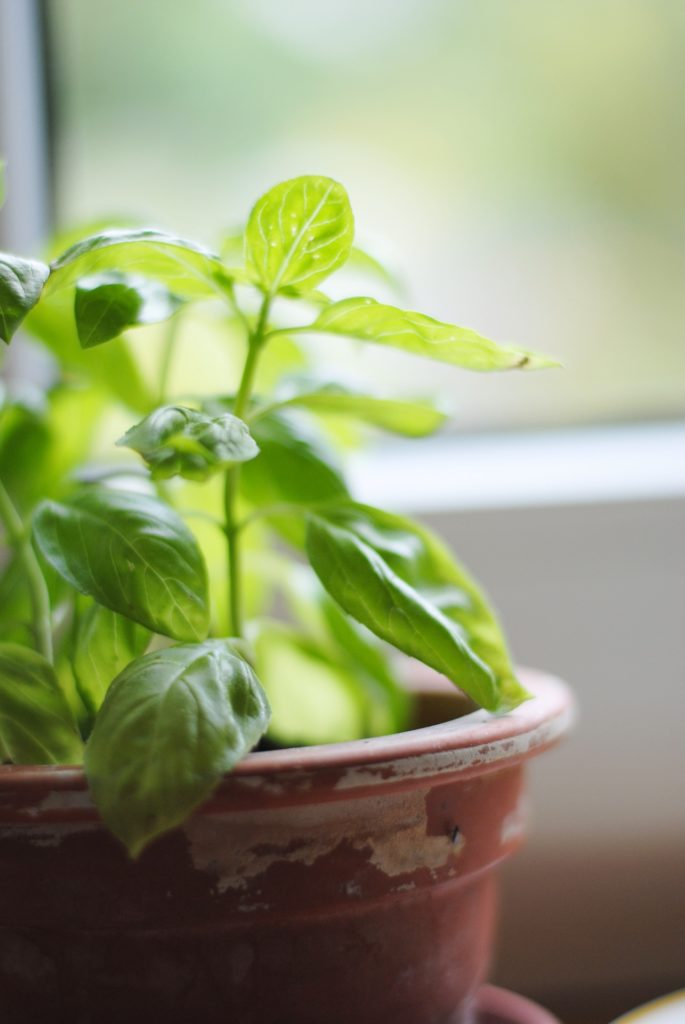
It is very possible that you will harvest the potatoes before the root systems of the basil plants becomes extensive; therefore, you should not severely damage the basil during the potato harvest.
To further reduce this risk, plant basil 18″ from the potato plants, along the very edge(s) of the bed. You also want the basil to receive afternoon sun, so plan to plant your basil plants on the western/southern side of the bed.
For a fall potato crop, plant your summer basil with a wide spacing between rows or plants. As the summer begins to wind down, plant your seed potatoes between them, staying away from the main roots of the plants.
You will likely harvest your basil before the potato plants become very large, eliminating the risk of competition.
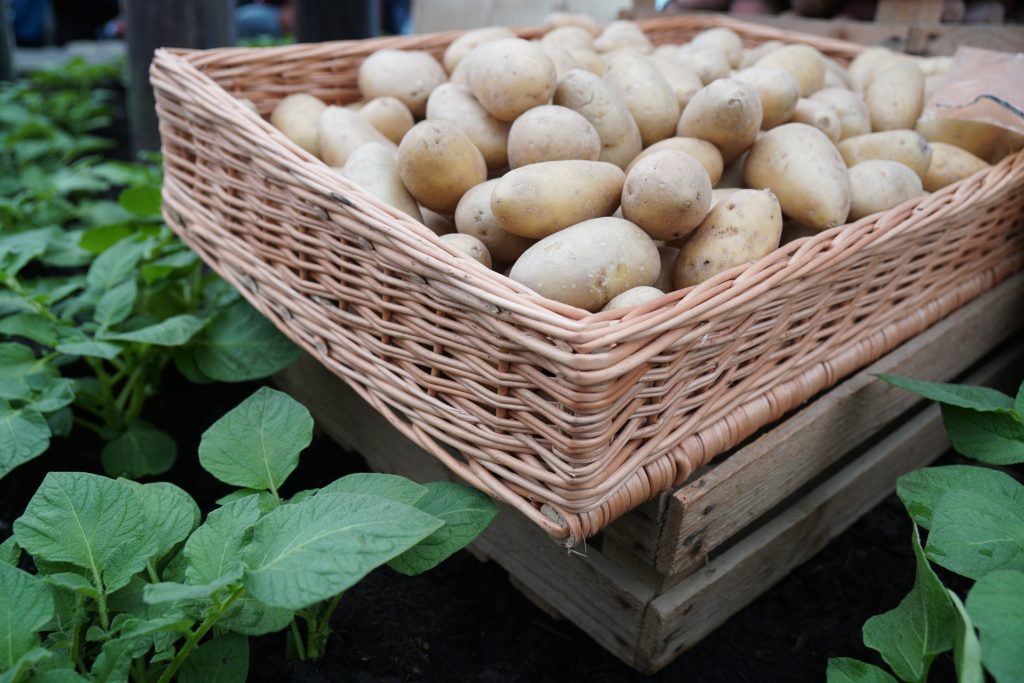
Growing Beans with Potatoes: The Power Couple of Potato Companion Planting!
Beans and potatoes are two very important crops in virtually all corners of the globe; if they can be grown, they are! Potatoes are heavy croppers that are rich in energizing carbohydrates, while easy-to-grow beans pack a protein-filled punch; both also store through winter incredibly well, making them staples in the pantry.
Did you know you can grow these two powerhouses as companions in one bed??? You sure can!
Again, potatoes enjoy the cooler weather, so they will be in the raised bed long before the heat-loving beans are.
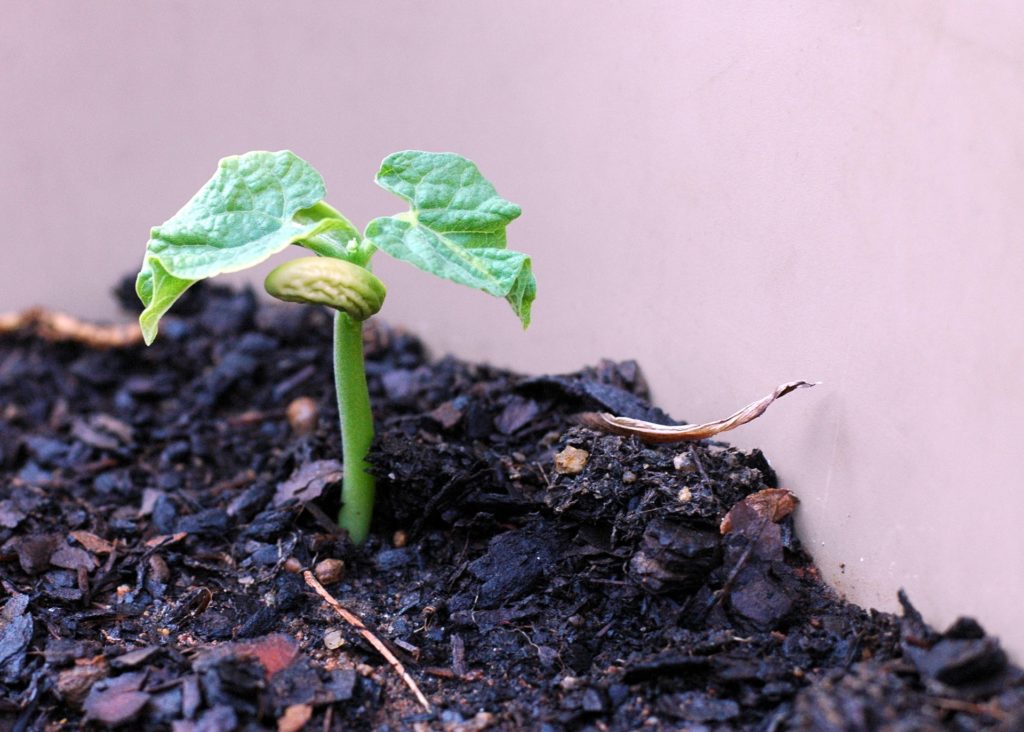
The beans should be planted on the side of the bed that receives the shorter morning sun hours in order to reduce competition. Now, do know that I am speaking in regards to pole beans, as they are far more friendly in limited-space situations (such as raised beds). Bush beans will be a bit different!
Beans will tower over the potatoes, but they will not shade them out if you have them on the correct side of the potatoes (eastern/northern side of the bed). This allows the beans to absorb morning sunlight as seedlings, and both morning and afternoon as large vines.
Be sure to add a trellis for the bean vines, or they might choke out your potato plants!
As a side note, beans enrich the soil through nitrogen fixation. If you grew nitrogen hogging crops (corn, greens, etc) in the previous year, beans are a good way to help balance the soil.
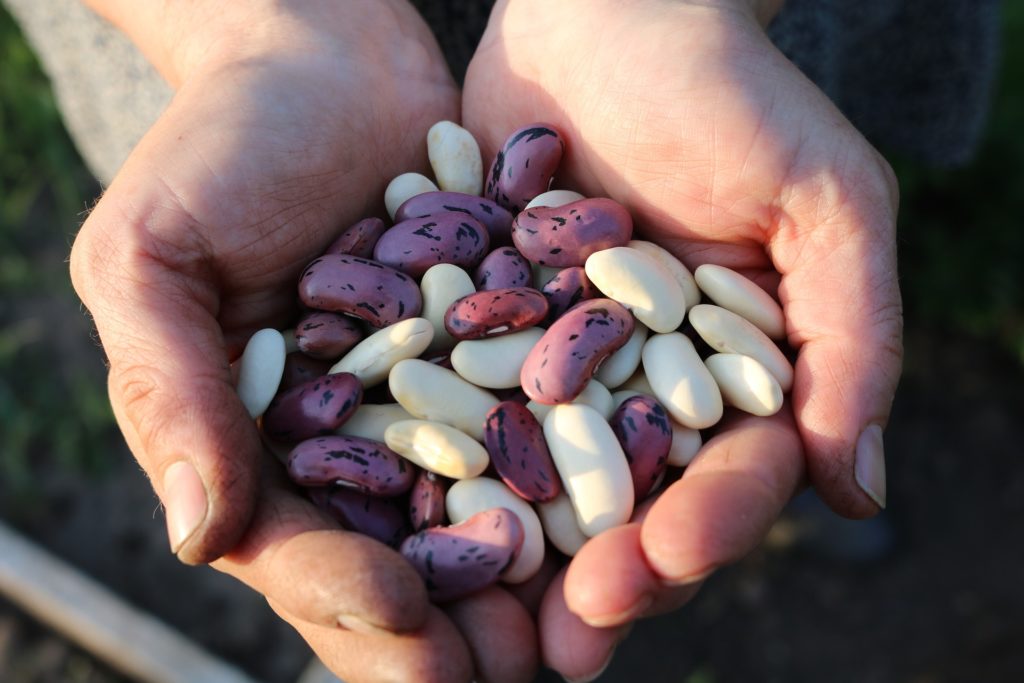
Cabbage, Broccoli, Brussel Sprouts, Cauliflower, & Other Brassicas
Cold weather crops, such as brassicas, are commonly planted as early as 8 weeks before the last frost (in some zones, they are grown all winter long!).
Since potatoes require that temperatures be above freezing, the Brassica family is perfect for the off-season!
If you’re growing cabbage, broccoli, brussel sprouts, or cauliflower through the winter, plant your seed potatoes approximately 1 to 2 weeks before the last frost date.
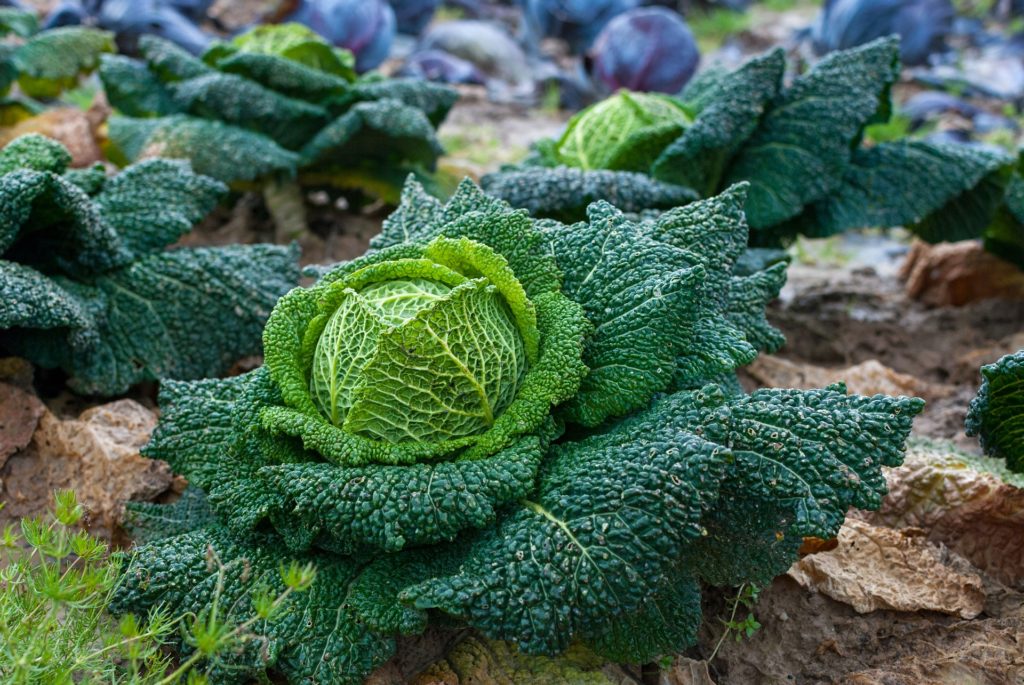
Be careful while planting, and don’t leave any of the root systems of the Brassicas exposed. Cold snaps will harm exposed roots.
If you’re growing a fall crop of potatoes, sow the seeds of the Brassicas approximately 2 months before the last frost date, taking care to plant the seeds at least 18″ from an existing potato plant.
They should be sturdy, large-sized seedlings when your potatoes are harvested (before frost occurs). The potatoes will also help to shade these tender seedlings from the relentless summer sun, which is unforgiving on cold weather crops.

Corn and Potato Companion Planting: Can It Really Be Done?
Let’s face it: corn stalks are massive. They produce a lot of shade, which isn’t good for tuber production in potatoes.
Corn requires a minimum of 70 days to reach harvest from planting, and it is generally not planted until 2 to 3 weeks after the last frost date. This gives you roughly 85 to 92 days before the corn is at full size, from the first frost date.
Most potatoes go from planting to harvest in 55 to 110 days, depending on the variety and how the potatoes are being used (are you growing mature potatoes, or new potatoes?).
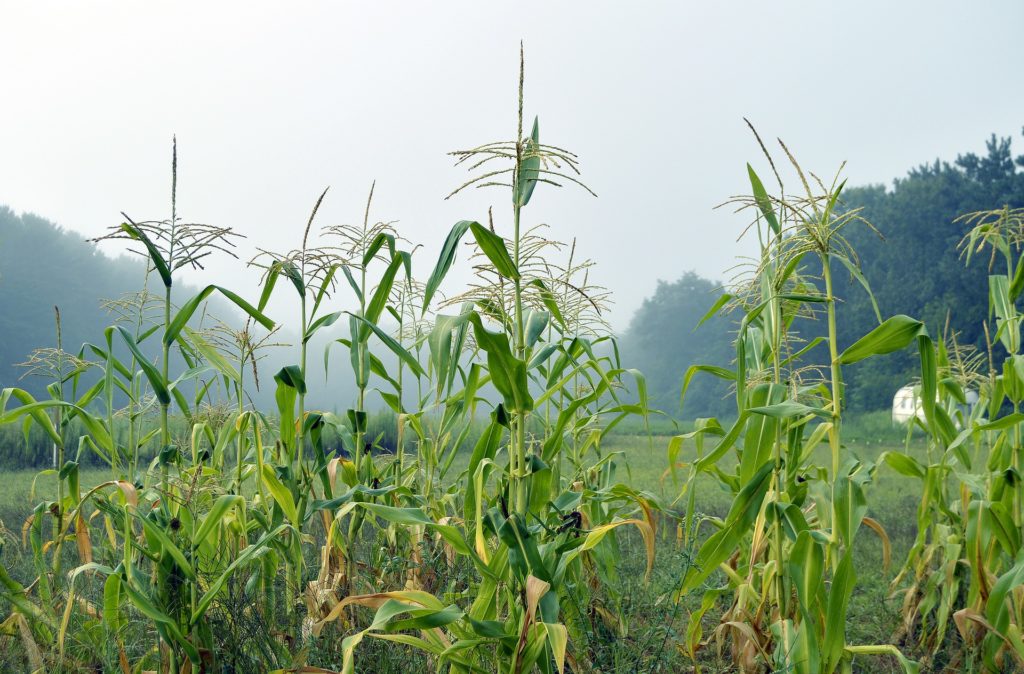
Potatoes are also planted a bit before the frost date on many farms and homesteads, as the sprouts take a while to break ground.
If you plant your corn on the side of the raised bed with morning sun, you should be rewarded with an excellent harvest of both corn and potatoes!
Just be sure to keep an eye on your bed’s fertility, as corn is a heavy feeder with many nutrients, including nitrogen. You also need to double plant the row of corn (two rows, closely seeded) in order to increase pollination success. Pollinating by hand is not a bad idea, either!

Planting Marigolds with Potatoes In Raised Beds
Marigolds may fool you into thinking they’re just a pretty little flower.
However, they actually benefit the potatoes greatly when planted together: they ward off some not-so-friendly nematodes!
Seed the marigolds right after the last frost date, and allow them to grow among your potatoes. They will not compete with the potatoes underground, and they will offer up some beautiful cut flowers for the table when they go into bloom!
Be sure to till the marigolds back into the soil at the end of the growing season, because their guardian trait will carrier over into the next season within the soil!

Growing Potatoes & Peas Together
Peas are another excellent nitrogen fixing crop! Therefore, they are a perfect companion for potatoes when you’re trying to improve the nitrogen content of the soil.
Potatoes do not take much nitrogen; instead, they are more heavy feeders of potassium and phosphorus. This is a common trait among root vegetables, actually!
Since this pairing is perfect for soils that are depleted of nitrogen, you should give it a go after crops like corn or leafy greens.
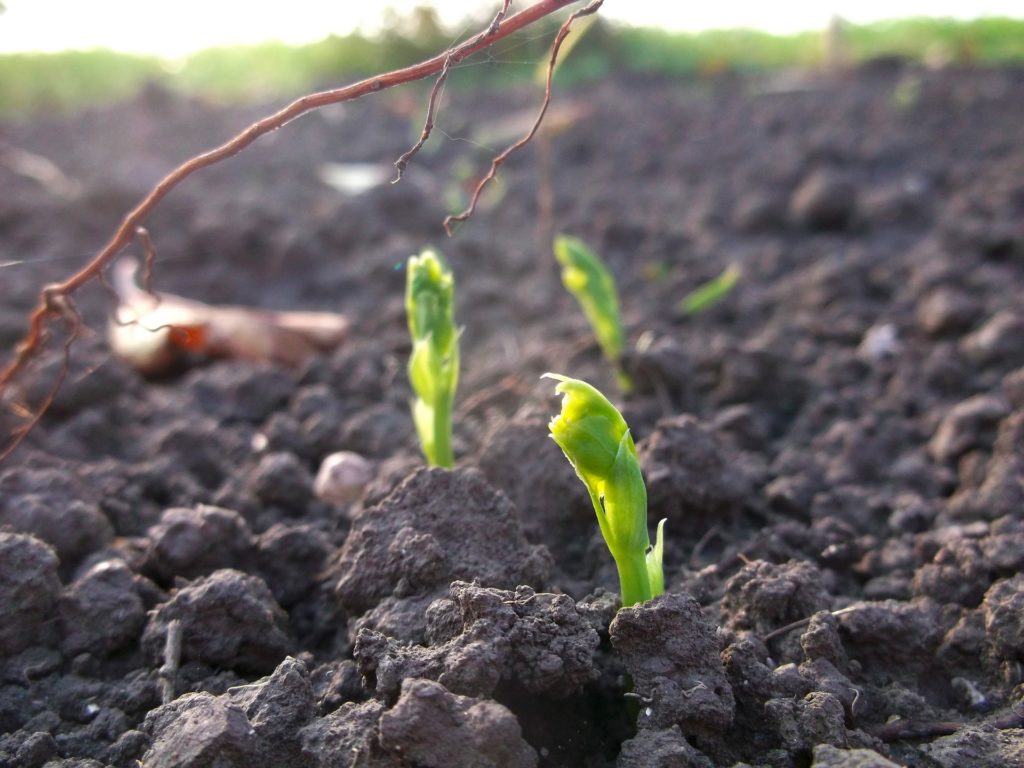
Peas aren’t incredibly demanding of space, but they will need trellising on the morning-sun side of the bed as we discussed with beans.
However, bushy pea plants may need a short buffer crop (such as Thyme) between themselves and the potatoes; just to ensure that both crops get enough light.
Peas will live far longer than the potato plants, as they can withstand temperatures into the low 20s. This allows peas to take advantage of the last few warm ups in the fall; long after the potatoes are taken by frost!
This will give the peas unlimited space and sunlight during that last month before the dead of winter settles in.
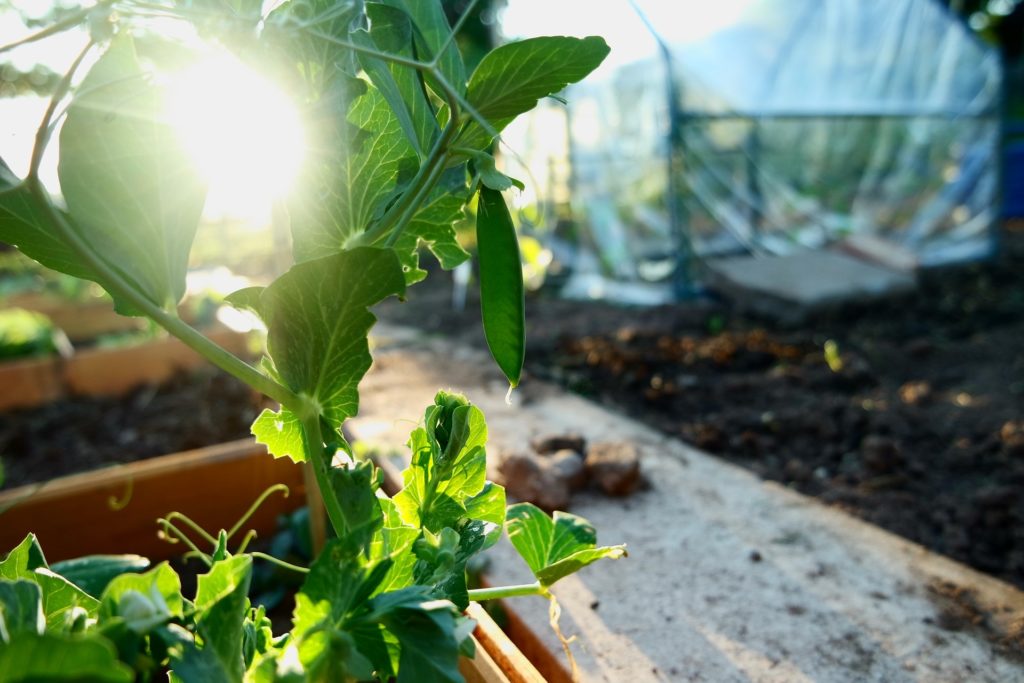
Planting Carrots and Potatoes Together: Excellent Companion Pairing!
I’m going to tell you right now: Carrots are so, incredibly, unbelievably, EASY!
If you’re trying to decide what to plant with potatoes in raised beds that is easy, delicious, survives neglect, and can take some serious cold weather, the carrot is most definitely what you’re looking for.
Carrots can be planted in the summer or fall for winter harvests, and can survive a cold winter with protection.
In warmer zones, such as 7a to 8b, you can grow carrots virtually all winter; there will be the exception of some particularly bad cold snaps (carrots appear to be hardy in my garden to 18*F, with absolutely no cover).
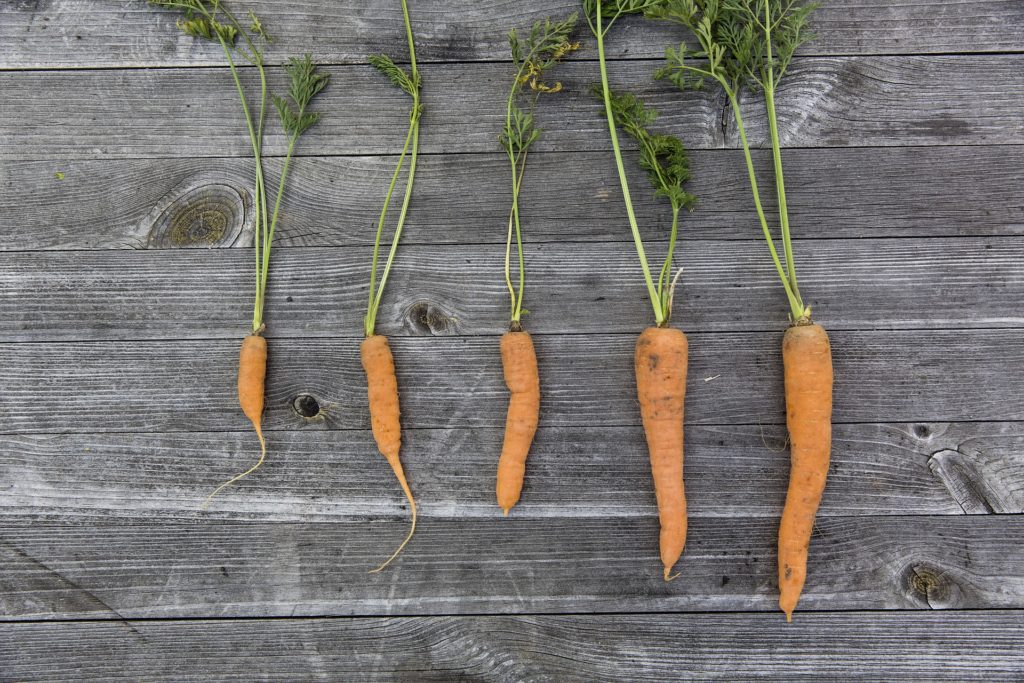
If you keep the carrot plants under plastic during the coldest days, or if they are insulated by snow, you will likely harvest them all winter long!
Plant seed potatoes around the carrots in the spring, under the large carrot tops. The carrot tops will continue to grow, providing a protective canopy.
If there is a frost, your potatoes will sustain far less damage if they have protection over them. Not only will the carrot tops absorb the frost, a heavy crop of them will also help to insulate the soil; this heat will radiate beneath the carrot tops, and blanket the potatoes.
Carrots will be pulled long before their roots can compete with the potatoes; they will also help to loosen the soil for potatoes, as well!
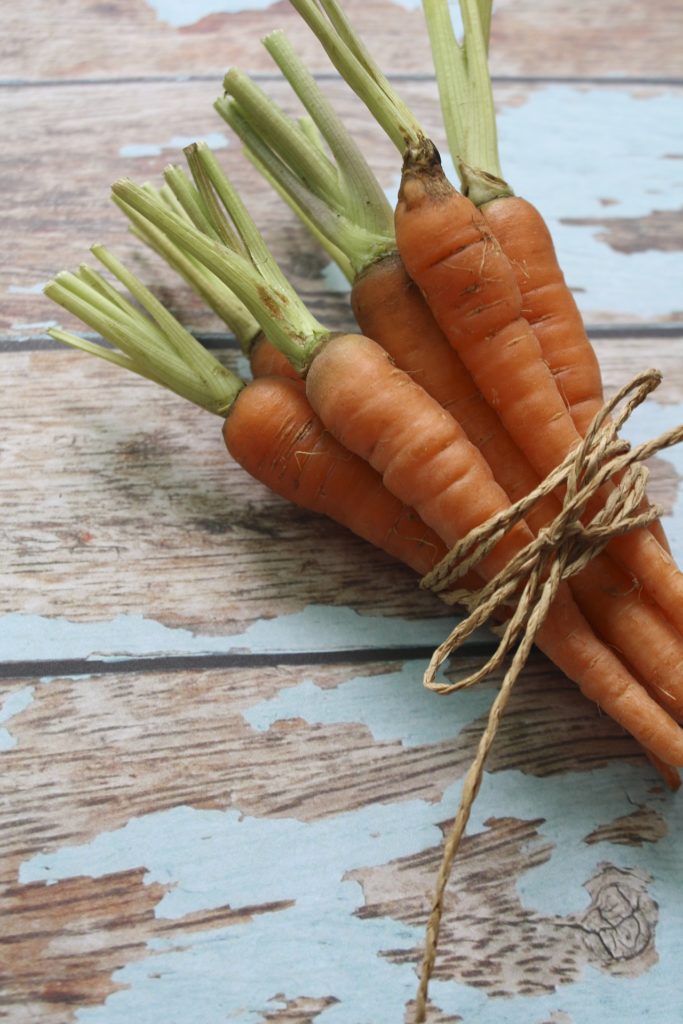
A Final Thought!
As I said in the beginning, there ARE some pairings that you do not want to experience; some garden plants are pretty much enemies, causing one another to be stunted in growth or to produce a pitiful harvest.
Keep your potatoes far away from these plants to avoid negative relationships!
Potatoes do need to be watched over protectively to prevent pests and disease; but if you plant them near some not-so-friendly crops, you may introduce stunting plant hormones or shared diseases unknowingly.